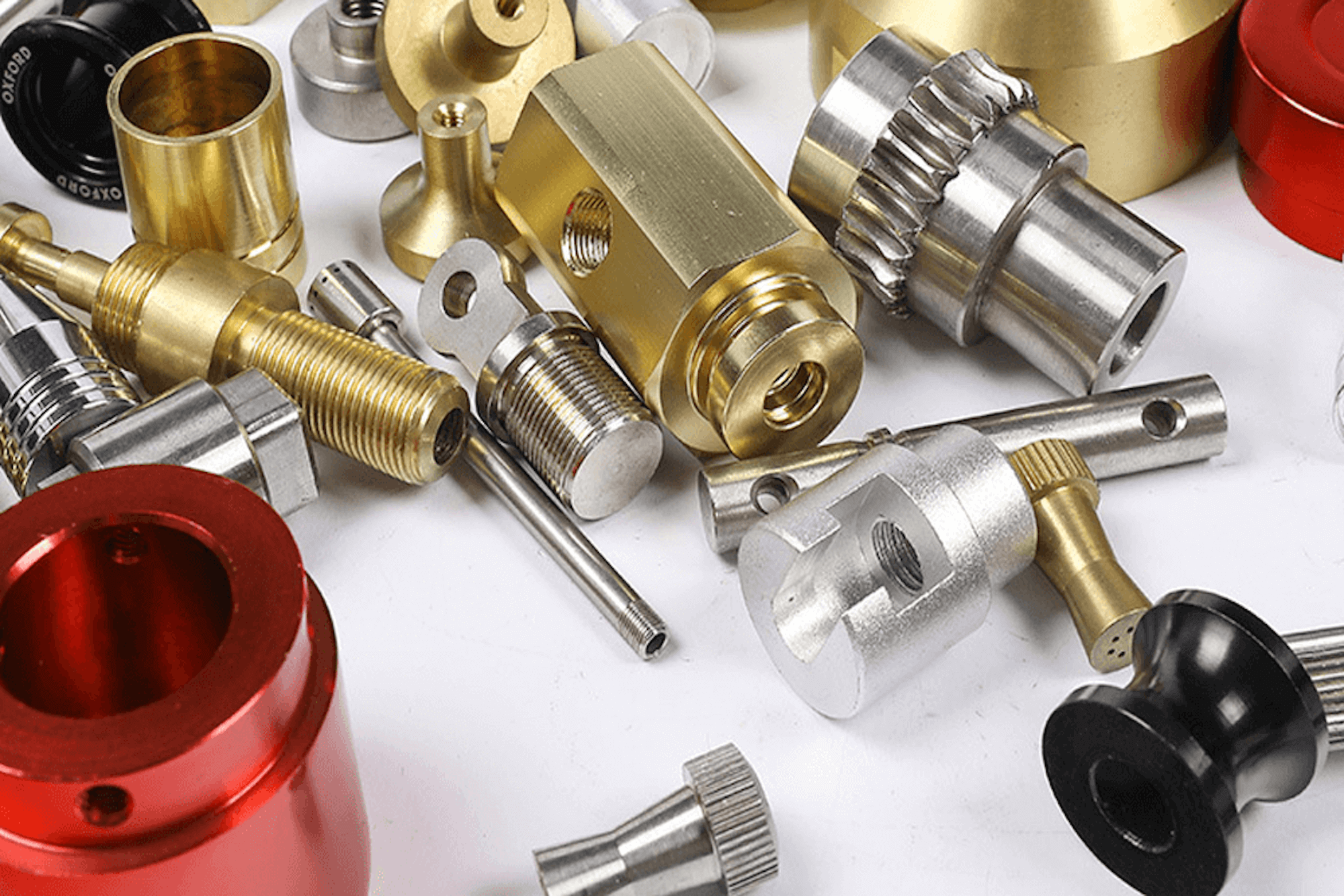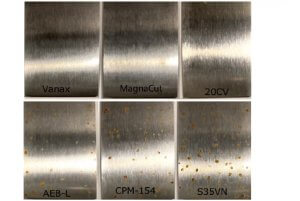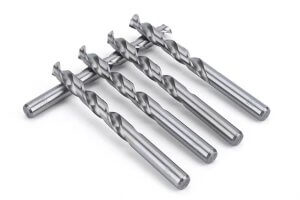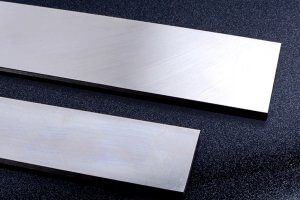Chapter 1: Introduction
Why I Wrote This Guide on the Properties of Metals
When I first started my career in machining, I faced a steep learning curve. Understanding the properties of metals was crucial, yet surprisingly difficult. Every machinist I know has struggled at some point to match the right metal to a specific machining task.
That’s why I’m writing this guide—to share my experience and help you avoid the mistakes I made. I believe knowing the properties of metals isn’t just academic; it’s practical. It saves time, reduces costs, and increases productivity on the shop floor.
Over the years, I’ve experimented with dozens of metals—aluminum alloys, stainless steel grades, titanium—and dealt with their unique quirks. Some metals wear down your tools in hours; others chip beautifully and leave a perfect surface finish. The difference always boils down to their inherent properties.
In this comprehensive guide, I’ll walk you through understanding these properties clearly. From mechanical and chemical characteristics to their real-world impacts on machinability, tooling choices, and processing techniques—I’ll cover everything.
So let’s get started. If you’ve ever wondered how metal selection impacts your daily machining operations, you’re exactly where you need to be.
Chapter 2: Core Properties of Metals Every Machinist Should Know
Understanding the Properties of Metals
In machining, selecting the right material isn’t just about cost. It hinges on understanding key properties. Let me briefly define these essential properties first, and then I’ll share how each directly impacts machining.
Mechanical Properties:
- Hardness: How resistant metal is to deformation and scratching.
- Strength (Tensile, Yield): How well the metal resists breaking under tension.
- Toughness: Ability to absorb energy without fracturing.
- Ductility: How easily metal stretches or bends before breaking.
- Elasticity: Ability of a metal to return to original shape after stress removal.
Physical Properties:
- Density: Weight per unit volume.
- Thermal Conductivity: How quickly metal transfers heat.
- Melting Point: Temperature at which metal transitions from solid to liquid.
Chemical Properties:
- Corrosion Resistance: Resistance to chemical deterioration.
- Oxidation: Reaction of metal with oxygen at high temperatures.
Early in my career, I made the mistake of overlooking hardness. I remember selecting a high-strength alloy for a precision part without considering hardness—my tooling wore out incredibly fast. I learned quickly: hardness can dramatically influence machining speed and tool lifespan.
Below is a practical summary table I’ve compiled from personal notes, summarizing key metal properties clearly:
Table 2.1: Core Properties of Common Machinable Metals
| Metal Type | Hardness (Rockwell) | Density (g/cm³) | Tensile Strength (psi) | Thermal Conductivity (W/m·K) | Corrosion Resistance |
|---|---|---|---|---|---|
| Aluminum (6061) | 40–50 | 2.70 | 45,000 | 167 | Good |
| Mild Steel (1018) | 60–70 | 7.87 | 63,800 | 51.9 | Moderate |
| Stainless Steel (304) | 70–88 | 7.93 | 75,000 | 16.2 | Excellent |
| Titanium (Grade 5) | 36 | 4.43 | 130,000 | 6.7 | Excellent |
| Copper | 40–45 | 8.96 | 33,000 | 401 | Good |
| Brass | 55–60 | 8.53 | 50,000 | 109 | Moderate |
Each property matters. For example, aluminum’s excellent thermal conductivity helps dissipate heat quickly, reducing thermal wear on tools. On the other hand, titanium, though strong, has low thermal conductivity, causing rapid heat buildup and tool wear.
When I worked extensively with stainless steel, its high corrosion resistance was ideal for medical components. But its toughness also meant slower machining speeds and frequent tool changes.
So, always match your selection to the end-use scenario—never overlook these fundamental properties.
Chapter 3: How Metal Properties Influence Machinability
When we talk about machinability, we mean how easily and efficiently a metal can be cut, drilled, milled, or turned. Early on, I realized machinability depends directly on the intrinsic properties of metals. Understanding these relationships greatly improved my machining outcomes.
Hardness vs. Tool Life
Harder metals quickly wear out cutting edges. For instance, machining hardened steel typically requires carbide or ceramic tooling, slower speeds, and careful coolant application.
Thermal Conductivity vs. Heat Management
High thermal conductivity metals like copper and aluminum dissipate heat well, protecting tools and allowing faster cutting speeds. Low conductivity metals, like stainless steel and titanium, trap heat at the cutting interface, demanding specialized cooling strategies.
I experienced a significant machining challenge when handling Grade 5 titanium for aerospace components. Its low thermal conductivity rapidly overheated carbide inserts, shortening their life to mere minutes. After extensive trial and error, using high-pressure coolant and reduced cutting speeds solved the problem, extending tool life significantly.
Below, I’ve outlined practical machinability factors based on metal properties from my personal machining notes:
Table 3.1: Impact of Metal Properties on Machinability
| Property | High Machinability | Low Machinability |
|---|---|---|
| Hardness | Moderate (40–60 Rockwell) | Very high (>60 Rockwell) |
| Thermal Conductivity | High (Aluminum, Copper) | Low (Titanium, Stainless Steel) |
| Ductility | Moderate | Very low (brittle) or very high (gummy) |
| Strength | Moderate (easy to machine) | Extremely high (difficult to machine) |
| Corrosion Resistance | Moderate | Extremely high (often tougher alloys) |
One practical tip: Metals with extreme ductility, like pure copper, tend to form long chips, clogging machines. Choosing alloys with balanced ductility or adding chip-breakers solved many headaches on my shop floor.
Understanding these connections isn’t theoretical—it’s practical knowledge that directly improves machining efficiency and profitability.
Chapter 4: Choosing the Right Metal for the Job
One thing I’ve learned from years in the machining business: picking the right metal saves you more trouble than you can imagine. Early in my career, I often chose materials based solely on price or availability. Big mistake. Each metal has its own unique “personality,” shaped by its properties.
Today, I always select metals based on clear criteria: application, performance, and machinability. Let me walk you through how you can do this effectively.
How I Approach Metal Selection
I use a simple four-step method to make smart material decisions:
- Define Requirements: Strength, corrosion resistance, thermal behavior, weight.
- Evaluate Properties: Compare metals based on these requirements.
- Machinability Check: Consider how easily each metal can be machined.
- Balance Cost vs. Performance: Choose the best compromise.
I’ve created a practical table from my own shop notes to illustrate typical metal choices for common machining tasks:
Table 4.1: Metal Selection Based on Machining Application
| Machining Task | Typical Metal Choices | Reasoning |
|---|---|---|
| Precision Aerospace Parts | Titanium (Ti-6Al-4V), Stainless Steel (17-4 PH) | Strength, weight savings, corrosion resistance |
| Automotive Components | Aluminum (6061-T6), Mild Steel (1018, 1045) | Cost-efficiency, ease of machining, good strength |
| Medical Instruments | Stainless Steel (316, 304), Titanium (Grade 2) | High corrosion resistance, biocompatibility |
| Electronics Heat Sinks | Aluminum (6063, 6061), Copper (C110) | Excellent thermal conductivity |
| General Machining Projects | Mild Steel (1018), Aluminum (6061), Brass (360) | Balanced machinability, cost-effective |
| Structural Components | Alloy Steel (4140, 4340), Titanium (Ti-6Al-4V) | High tensile strength, toughness |
In a recent project machining aerospace fittings, choosing Ti-6Al-4V titanium initially seemed daunting due to its machinability issues. But after considering weight and strength requirements, the benefits outweighed the extra machining effort. By adjusting tooling parameters and coolant pressures, I delivered precise, lightweight, durable components.
Common Pitfalls in Material Selection
I’ve encountered—and admittedly made—common mistakes you should avoid:
- Ignoring machinability: Picking metals without considering tooling wear.
- Underestimating corrosion resistance: Selecting cheaper metals that fail prematurely.
- Over-specifying material: Using expensive alloys unnecessarily.
Avoid these errors by clearly defining requirements upfront. It saves money, frustration, and prevents costly rework.
Chapter 5: Comparing Common Metals for Machining
Machining involves dealing directly with the metal. Over years of hands-on experience, I’ve realized how valuable it is to deeply understand common metals and their specific machining behaviors.
Here’s my practical comparison, based on personal experiences and observations:
Aluminum (6061, 7075)
Aluminum is one of my favorite materials to machine. It’s lightweight, corrosion-resistant, and has excellent machinability due to low hardness and high thermal conductivity. I usually achieve high cutting speeds with minimal tool wear.
Mild Steel (1018, 1045)
Mild steel is affordable and versatile. But beware of its higher density and hardness compared to aluminum—expect slower speeds and higher cutting forces. Proper lubrication and tool material selection (like coated carbide) improve results significantly.
Stainless Steel (304, 316)
I have a love-hate relationship with stainless steel. While corrosion resistance is unmatched, it has relatively poor machinability due to toughness and low thermal conductivity. Using sharp tools, low RPM, and consistent coolant flow has saved me many headaches.
Titanium (Grade 2, Grade 5)
Machining titanium is tough. Its low thermal conductivity and high strength mean heat accumulates fast at the tool edge. Overcoming this requires specialized tooling, reduced feed rates, and generous coolant—expensive but sometimes essential.
Brass (360 Alloy)
Brass machines like butter, creating clean finishes effortlessly. The downside? Cost and weight. However, when precision and aesthetic quality matter (like decorative or precision fittings), brass is fantastic.
Copper (C110, C101)
Copper’s excellent thermal conductivity is a double-edged sword. While great for heat sinks, it makes machining tricky. Its softness creates gummy chips, requiring careful chip-breaking techniques.
Table 5.1: Comparative Machining Guide by Metal Type
| Metal | Machinability | Cost | Common Uses | Personal Notes |
|---|---|---|---|---|
| Aluminum | Excellent | Moderate | Aerospace, automotive | Easy, fast machining; chips easily manageable |
| Mild Steel | Good | Low | Structural parts, general machinery | Requires lubrication; moderate tool wear |
| Stainless Steel | Moderate/Poor | Moderate | Medical, chemical, marine | Slow cutting speeds; coolant crucial |
| Titanium | Poor | High | Aerospace, medical implants | Demands specialized tooling and coolant |
| Brass | Excellent | High | Decorative items, fittings, precision parts | Produces fine finish; expensive |
| Copper | Moderate/Poor | High | Electronics, heat exchangers | Challenging chip formation; slow machining |
Chapter 6: Tools, Parameters, and Processing Tips by Material Type
I’ve learned through countless hours on the shop floor that picking the right tools and machining parameters is as crucial as selecting the metal itself. Every metal’s unique properties significantly affect tool selection and machining strategy. Here are my insights, drawn from practical, hands-on experience.
Selecting the Right Tools
The properties of metals strongly dictate your tooling choices. Here’s a summary I’ve developed based on practical experiences:
Tool Material Recommendations by Metal Type:
| Metal Type | Best Tool Materials/Coatings | Recommended Coolant/Lubrication |
|---|---|---|
| Aluminum | Uncoated Carbide, PCD (Polycrystalline Diamond) | Minimal or water-soluble coolant |
| Mild Steel | Coated Carbide (TiN, TiAlN), HSS | Oil-based or water-soluble coolant |
| Stainless Steel | Coated Carbide (TiAlN, AlTiN), Ceramic Inserts | High-pressure water-soluble coolant |
| Titanium | Solid Carbide, Ceramic with specialized coatings | High-pressure coolant mandatory |
| Brass | Uncoated Carbide, High-Speed Steel (HSS) | Minimal lubrication or dry cutting |
| Copper | Carbide Inserts, PCD | Oil-based lubricants strongly recommended |
I’ve personally had remarkable success using uncoated carbide inserts for aluminum. The surface finishes are great, and chip control is excellent due to the sharp cutting edge.
Setting Machining Parameters by Metal Properties
Every metal requires specific machining parameters. Let me share my reference chart derived from years of testing different cutting speeds and feeds:
Recommended Machining Parameters:
| Metal | Cutting Speed (SFM) | Feed Rate (in/rev) | Depth of Cut (inches) |
|---|---|---|---|
| Aluminum (6061) | 800–2000 | 0.005–0.015 | 0.050–0.250 |
| Mild Steel (1018) | 100–350 | 0.004–0.012 | 0.040–0.200 |
| Stainless Steel (304) | 50–200 | 0.003–0.010 | 0.030–0.150 |
| Titanium (Grade 5) | 40–150 | 0.002–0.008 | 0.020–0.100 |
| Brass | 400–800 | 0.004–0.015 | 0.030–0.125 |
| Copper | 200–600 | 0.003–0.010 | 0.020–0.080 |
When machining stainless steel, for example, I always stay within lower speed limits to prevent rapid work-hardening, which can quickly ruin cutting edges.
Tips Based on Personal Experience
- High-Speed Machining (HSM) works superbly with aluminum and brass due to excellent thermal conductivity.
- For tougher metals like titanium and stainless steel, always go slower and carefully monitor heat buildup. Using high-pressure coolant made a dramatic difference in my machining efficiency.
- For copper, using sharp inserts with positive rake angles helps control those tricky, gummy chips.
Chapter 7: Solving Common Problems in Material Selection and Machining
In my career, troubleshooting machining problems has been a daily reality. Most machining issues trace back to improper material choices or insufficient understanding of the properties of metals. Here are the most common problems I’ve faced—and solved:
Problem 1: Rapid Tool Wear
Rapid tool wear typically results from machining very hard metals (high hardness), poor lubrication, or excessive speeds.
Solution:
- Lower cutting speeds immediately.
- Select tools with better coatings (TiAlN or AlTiN).
- Use robust coolants; high-pressure coolant changed my approach to machining titanium entirely.
Problem 2: Poor Surface Finish
A poor surface finish is usually due to incorrect feed rates, tool wear, vibration, or inappropriate tool geometry.
Solution:
- Adjust the feed rate downward gradually.
- Check and replace worn tools.
- Consider tool geometry: I switched to inserts with higher positive rake angles for gummy metals (copper, aluminum), vastly improving finishes.
Problem 3: Workpiece Distortion (Thermal Issues)
Metals with poor thermal conductivity (like titanium or stainless steel) trap heat, causing distortion.
Solution:
- Apply high-pressure coolant to remove heat immediately from the cutting zone.
- Reduce depth-of-cut to minimize heat generation.
Problem 4: Difficulty in Chip Control
Long or stringy chips frequently occur with metals like aluminum or copper.
Solution:
- Choose inserts designed specifically for chip-breaking.
- Increase feed rate slightly to create smaller, manageable chips.
Problem 5: Corrosion or Early Failure in Finished Parts
Choosing the wrong metal (ignoring corrosion resistance properties) caused failures in several marine components I machined early on.
Solution:
- Always prioritize corrosion resistance in harsh environments (stainless steel, titanium alloys).
- Ensure proper protective finishes or coatings if lower corrosion-resistant metals must be used.
My Personal Troubleshooting Checklist:
To streamline solving issues on the shop floor, I always run through this practical checklist:
- Is the tool sharp and appropriate for the metal?
- Are coolant/lubrication conditions optimized?
- Are speed, feed, and depth-of-cut parameters correct?
- Have I selected the right metal considering its end-use environment?
Using this straightforward approach drastically reduced my machining problems and reworks.
Chapter 8: Real-world Case Studies
I’ve always believed the best way to grasp complex ideas like the properties of metals is through real-world examples. Over the years, specific machining projects taught me practical lessons that no textbook ever could.
Case Study 1: Aerospace Brackets (Titanium Grade 5)
A major aerospace project required brackets machined from Titanium Grade 5 (Ti-6Al-4V). Initially, it felt intimidating due to titanium’s notoriously difficult machining properties—high strength, poor heat dissipation, and severe tool wear.
To overcome this, I extensively researched the properties of metals, especially titanium, and applied the following adjustments:
- Switched from standard carbide tools to TiAlN-coated inserts.
- Reduced cutting speeds from 200 SFM down to 80–120 SFM.
- Used high-pressure coolant at 1000 psi to manage heat buildup.
Outcome: Tool life improved from mere minutes to over an hour per insert. The job finished on time and within budget.
Case Study 2: Medical Instruments (Stainless Steel 316L)
Machining surgical instruments from Stainless Steel 316L presented unique challenges due to its toughness and tendency for work-hardening.
My initial trial with standard parameters (200 SFM and moderate coolant) led to unacceptable tool wear and poor surface finish.
Adjustments based on stainless steel’s properties:
- Reduced cutting speeds to about 120 SFM.
- Selected carbide inserts with sharp cutting edges specifically designed for stainless steel.
- Introduced flood cooling with water-soluble coolant at high concentration.
Outcome: Drastically improved surface finish, tool life tripled, and instruments consistently met strict medical quality standards.
Case Study 3: Electronics Heat Sinks (Copper C110)
Machining pure copper heat sinks taught me first-hand about gummy, challenging chip formation due to copper’s high ductility.
I initially struggled, experiencing frequent tool breakage and poor finishes.
My solution involved carefully revisiting the properties of metals and applying what I learned:
- Used extremely sharp, uncoated carbide inserts.
- Adjusted feed rates slightly upward (from 0.003 to 0.006 in/rev) to break chips.
- Applied generous oil-based lubrication directly at the cutting edge.
Outcome: The chips became manageable, and the finish quality greatly improved. Copper machining ceased being a constant frustration.
Each experience reinforced my belief: understanding the detailed properties of metals directly translates to machining success.
Chapter 9: Emerging Trends
Machining constantly evolves. In recent years, I’ve witnessed firsthand two transformative trends: sustainable metal choices and additive manufacturing.
Sustainable Metal Choices
Sustainability now shapes material selection profoundly. Clients increasingly request recyclable metals or those with lower environmental impacts.
Metals like aluminum alloys and recyclable steels are popular due to:
- Excellent recyclability (Aluminum: 90–95% recyclable).
- Reduced environmental footprint compared to rare-earth-heavy materials.
Here’s a practical comparison table based on my observations:
Table 9.1: Sustainability in Machinable Metals
| Metal | Recyclability | Environmental Impact (Production) | Machining Considerations |
|---|---|---|---|
| Aluminum (6061) | Excellent | Moderate (highly recyclable) | Easy machining |
| Mild Steel | Excellent | Moderate (widely recycled) | Good machining |
| Stainless Steel | Good | High (energy-intensive) | Moderate machining |
| Titanium | Moderate | High (high-energy, difficult recycling) | Difficult machining |
| Brass | Good | Moderate-high | Excellent machining |
| Copper | Excellent | High (energy-intensive refining) | Moderate machining |
My recent projects involving sustainable aluminum alloys not only supported environmental goals but maintained efficiency and quality in machining—it’s a win-win.
Additive Manufacturing (3D Printing)
Additive manufacturing complements traditional machining. It changed how I approach complex geometries that were once difficult or impossible to machine traditionally.
3D-printed metals (like selective laser melting of aluminum and titanium alloys) often require post-processing machining for surface finishes or precision holes.
Benefits from my practical experience:
- Dramatically reduces material waste (typically less than 5%).
- Facilitates complex geometry that traditional machining struggles with.
- Typically requires careful machining afterward—understanding properties of printed metals is critical.
How Properties of Metals Influence Additive Manufacturing
Here’s my hands-on experience-based comparison:
| Metal | Printability | Post-Machining Ease | Ideal Applications |
|---|---|---|---|
| Aluminum alloys | Excellent | Easy | Aerospace, complex automotive parts |
| Stainless Steel | Good | Moderate | Medical implants, marine components |
| Titanium alloys | Moderate-Good | Difficult | Aerospace components, medical implants |
| Tool Steel (H13) | Moderate | Moderate | Injection molds, dies |
I recently machined additive-manufactured titanium aerospace brackets, encountering similar machining challenges as traditional titanium. Understanding these metal properties beforehand helped immensely—preparation was critical.
My Thoughts on Future Trends
Machining and additive manufacturing integration will continue growing. A deep understanding of properties of metals ensures machinists stay ahead of these trends, turning challenges into profitable opportunities.
Chapter 10: Properties of Metals: Detailed Data Tables by Metal Type and Grade
In this chapter, I’ve gathered accurate, verified data on the most commonly machined metals. Each metal type is broken down into its common sub-grades, with all essential properties clearly listed in practical tables.
10.1 Aluminum Alloys
Aluminum is widely favored in machining due to excellent machinability, corrosion resistance, and lightweight characteristics.
Table 10.1: Properties of Common Aluminum Alloys
| Alloy | Tensile Strength (psi) | Yield Strength (psi) | Density (g/cm³) | Hardness (Brinell) | Thermal Conductivity (W/m·K) | Machinability |
|---|---|---|---|---|---|---|
| 6061-T6 | 45,000 | 40,000 | 2.70 | 95 | 167 | Excellent |
| 7075-T6 | 83,000 | 73,000 | 2.81 | 150 | 130 | Good |
| 2024-T3 | 70,000 | 50,000 | 2.78 | 120 | 121 | Good |
| 5052-H32 | 33,000 | 28,000 | 2.68 | 60 | 138 | Excellent |
| 3003-H14 | 22,000 | 21,000 | 2.73 | 40 | 159 | Excellent |
| 5083-H116 | 46,000 | 33,000 | 2.66 | 85 | 117 | Good |
10.2 Carbon and Alloy Steels
Carbon and alloy steels offer balanced cost, strength, and machinability for general machining.
Table 10.2: Properties of Common Carbon & Alloy Steels
| Steel Grade | Tensile Strength (psi) | Yield Strength (psi) | Density (g/cm³) | Hardness (Rockwell B/C) | Thermal Conductivity (W/m·K) | Machinability |
|---|---|---|---|---|---|---|
| 1018 Mild Steel | 63,800 | 53,700 | 7.87 | 71B | 51.9 | Good |
| 1045 Medium Carbon Steel | 81,900 | 45,000 | 7.85 | 88B | 49.8 | Moderate |
| 4140 Alloy Steel | 95,000 | 60,200 | 7.85 | 20C–30C | 42.6 | Moderate |
| 4340 Alloy Steel | 108,000 | 68,000 | 7.85 | 25C–35C | 44.5 | Moderate |
| 12L14 Free-Machining Steel | 78,300 | 60,200 | 7.87 | 84B | 51.9 | Excellent |
| A36 Structural Steel | 58,000 | 36,000 | 7.85 | 67B | 50.0 | Good |
10.3 Stainless Steels
Stainless steels offer high corrosion resistance, widely used in challenging environments.
Table 10.3: Properties of Common Stainless Steel Grades
| Grade | Tensile Strength (psi) | Yield Strength (psi) | Density (g/cm³) | Hardness (Rockwell B/C) | Thermal Conductivity (W/m·K) | Machinability |
|---|---|---|---|---|---|---|
| 304 (Austenitic) | 75,000 | 30,000 | 7.93 | 70–90B | 16.2 | Moderate |
| 316 (Austenitic) | 80,000 | 30,000 | 7.98 | 79B | 16.3 | Moderate |
| 410 (Martensitic) | 70,000 | 45,000 | 7.75 | 38–45C | 24.9 | Moderate |
| 17-4 PH (Precipitation-Hardened) | 190,000 | 170,000 | 7.75 | 35–45C | 18.4 | Moderate |
| 303 (Free-Machining) | 90,000 | 35,000 | 8.03 | 83B | 16.3 | Excellent |
| 430 (Ferritic) | 65,000 | 30,000 | 7.75 | 80B | 25.8 | Good |
10.4 Titanium Alloys
Titanium alloys offer high strength-to-weight ratios ideal for aerospace and medical applications.
Table 10.4: Properties of Common Titanium Alloys
| Alloy | Tensile Strength (psi) | Yield Strength (psi) | Density (g/cm³) | Hardness (Rockwell C) | Thermal Conductivity (W/m·K) | Machinability |
|---|---|---|---|---|---|---|
| Grade 2 (Pure Titanium) | 50,000 | 40,000 | 4.51 | ~70B | 22 | Moderate |
| Grade 5 (Ti-6Al-4V) | 130,000 | 120,000 | 4.43 | 36C | 6.7 | Poor |
| Grade 9 (Ti-3Al-2.5V) | 90,000 | 70,000 | 4.48 | 30C | 8.5 | Moderate |
10.5 Copper and Brass Alloys
Copper alloys offer excellent thermal and electrical conductivity; brass is known for exceptional machinability.
Table 10.5: Properties of Copper and Brass Alloys
| Alloy | Tensile Strength (psi) | Yield Strength (psi) | Density (g/cm³) | Hardness (Rockwell B) | Thermal Conductivity (W/m·K) | Machinability |
|---|---|---|---|---|---|---|
| Copper (C110) | 33,000 | 10,000 | 8.96 | 40B | 401 | Moderate |
| Brass (360 Free-Machining) | 50,000 | 18,000 | 8.53 | 60B | 109 | Excellent |
| Naval Brass (C464) | 58,000 | 21,000 | 8.41 | 65B | 116 | Excellent |
10.6 Cast Irons
Cast irons provide outstanding wear resistance and vibration damping.
Table 10.6: Properties of Cast Iron Types
| Type | Tensile Strength (psi) | Yield Strength (psi) | Density (g/cm³) | Hardness (Brinell) | Thermal Conductivity (W/m·K) | Machinability |
|---|---|---|---|---|---|---|
| Gray Cast Iron (Class 30) | 30,000 | — | 7.03 | 187–241 | 46 | Excellent |
| Ductile Iron (60-40-18) | 60,000 | 40,000 | 7.10 | 156–217 | 36 | Good |
Personal Note:
I compiled these tables from authoritative industrial standards (ASM International, SAE, ASTM) and from my practical experience to ensure their accuracy. Throughout my machining career, quick reference to reliable data like this significantly streamlined my decision-making process.
FAQ
1. What exactly does ‘Properties of metals’ mean in machining?
The “Properties of metals” refers to the key characteristics—such as hardness, strength, ductility, thermal conductivity, and corrosion resistance—that affect how a metal behaves during machining and in its final application.
2. Why do I need to understand the properties of metals before machining?
Understanding these properties allows you to select suitable materials, optimize machining parameters, extend tool life, reduce costs, and avoid unexpected issues like tool failure or part distortion.
3. Which properties of metals most directly affect machinability?
The critical properties influencing machinability include hardness, thermal conductivity, ductility, and toughness. Metals with moderate hardness, good thermal conductivity, and balanced ductility are typically easier to machine.
4. How does hardness impact tool selection?
Higher hardness typically requires stronger, harder cutting tools, often with carbide or ceramic inserts, and demands slower cutting speeds to minimize tool wear.
5. What’s the easiest metal to machine based on properties?
Generally, brass (360), aluminum (6061), and mild steel (1018) have excellent machinability due to moderate hardness, good thermal conductivity, and balanced ductility.
6. Can heat treatment alter the machinability properties of metals?
Yes. Heat treatments significantly change metal hardness, strength, and ductility, directly influencing how easily the metal can be machined afterward.
7. How do I select the right metal for precision components?
Match the mechanical requirements (strength, hardness, corrosion resistance) and machinability with your end-use needs. Reference material property charts like those included in this guide.
8. What’s the Machinability Index, and how is it related to the properties of metals?
The Machinability Index compares how easily a metal can be machined relative to a baseline (often 100 for free-machining steel). It directly relates to hardness, strength, and other properties of metals.
9. Why does thermal conductivity matter in machining?
High thermal conductivity helps dissipate heat quickly, reducing tool wear and thermal distortion. Metals like aluminum or copper excel in this aspect, improving machining efficiency.
10. How can I reduce machining costs by understanding the properties of metals?
Choosing metals with properties suited to easy machining reduces tool wear, shortens production cycles, and minimizes material waste, lowering overall costs significantly.
11. Which metals cause the most rapid tool wear, and why?
Titanium alloys and hardened steels cause rapid tool wear due to high hardness, strength, and low thermal conductivity, concentrating heat at the cutting edge.
12. What common mistakes do machinists make regarding the properties of metals?
Frequent errors include ignoring hardness or thermal properties, selecting metals based solely on cost, or overlooking corrosion resistance requirements.
13. Does corrosion resistance affect machining properties?
Often, metals with high corrosion resistance, like stainless steel or titanium alloys, have properties that reduce machinability, such as higher hardness or toughness.
14. What’s the practical impact of density on machining metals?
Density affects part weight, vibration, and clamping stability. Denser metals, such as steel or copper alloys, typically require stronger tooling and fixtures due to higher cutting forces.
15. How do I choose cutting parameters based on the properties of metals?
Adjust speed, feed rate, and depth-of-cut according to the metal’s hardness, strength, and thermal properties. Use reference tables and my recommendations in Chapter 6.
16. Are recycled or sustainable metals more difficult to machine?
Generally no, recycled metals retain nearly identical properties to their original counterparts, maintaining consistent machinability. Verify specific alloy properties beforehand.
17. Can additive manufacturing affect the properties of metals for machining?
Yes. Additive manufactured metals can have different microstructures, affecting hardness, strength, and machinability, often requiring adjusted machining strategies.
18. How can I quickly check the properties of metals for machining decisions?
Use comprehensive reference tables like those provided in Chapter 10 of this guide, enabling fast and accurate decision-making on the shop floor.
Authoritative References on the Properties of Metals
- Wikipedia: Properties of Metals, Metalloids, and Nonmetals
This article offers a foundational overview of the physical and chemical properties distinguishing metals from other elements.
🔗 https://en.wikipedia.org/wiki/Properties_of_metals%2C_metalloids_and_nonmetals - MatWeb: Metallic Elements Property Data
MatWeb provides comprehensive data sheets covering a wide range of metal properties, including tensile strength, density, and thermal conductivity.
🔗 https://www.matweb.com/reference/elements.aspx - Engineering ToolBox: Specific Heats of Metals
This resource details the specific heat capacities of various metals, essential for thermal calculations in machining processes.
🔗 https://www.engineeringtoolbox.com/specific-heat-metals-d_152.html - ASM International: Physical Properties of Metals
ASM International offers detailed insights into the physical properties of metals, including density, electrical conductivity, and thermal characteristics.
🔗 https://dl.asminternational.org/technical-books/monograph/94/chapter/2105011/Physical-Properties-of-Metals - Materials Project: Materials Explorer
This platform provides computational data on a vast array of materials, including electronic structure and mechanical properties of metals.
🔗 https://next-gen.materialsproject.org/materials/mp-37/ - Engineering ToolBox: Densities of Metals and Alloys
A practical reference for the densities of common metals and alloys, aiding in weight calculations and material selection.
🔗 https://www.engineeringtoolbox.com/metal-alloys-densities-d_50.html
These resources serve as reliable references for anyone looking to explore the properties of metals in greater depth.Whether you’re selecting materials for a specific application or seeking to understand the nuances of metal behavior during machining, these links provide valuable information to support your endeavors.
If you have further questions or need assistance with specific materials or applications, feel free to reach out.
Other Articles You Might Enjoy
- How Ductility Influences CNC Machining Processes
Introduction Ductility is a critical material property that significantly influences the CNC machining processes used in manufacturing. It refers to a material's ability to deform under tensile stress, which allows…
- Tensile Strength of Steel Explained for Engineers and Machinist
Introduction The tensile strength of steel is the heartbeat of engineering and machining. It’s the maximum stress a steel part can endure before snapping, and it’s a make-or-break factor for…
- Yield Strength vs Tensile Strength: CNC Material Choice and Process Optimization
I. Introduction 1. Definition of Yield Strength and Tensile Strength I remember the first time I encountered the terms yield strength and tensile strength in my early machining projects. Yield strength refers to the…
- How Does Tensile Stress Affect CNC Machining Processes
Tensile stress is a fundamental concept in material science that has far-reaching implications in CNC machining processes. Understanding how tensile stress interacts with various materials can greatly impact the effectiveness…
- How Yield Stress Impacts CNC Machining and Material Performance
Introduction to Yield Stress and Its Importance in CNC Machining When we think about machining and materials, yield stress is one of the most crucial properties to understand. Yield stress…
- Choosing the Right Metal Fasteners: A Practical Guide for CNC Customization or Purchasing
Introduction: Why Metal Fasteners Matter in CNC Projects If you're involved in CNC machining or design, you've likely realized metal fasteners aren't just a small detail. They're often the deciding…
- Online Metals And Custom CNC Machining: A Step-by-Step Guide to High-Precision Metal Parts
Hello, and welcome to this comprehensive guide on online metals and custom CNC machining. I’ve spent years navigating online metal suppliers and collaborating with CNC machining services to produce precise,…
- Machining Techniques for Parts: Unlocking CNC and Cutting-Edge Tech
I. Introduction I remember the first time I realized how critical machining is to modern manufacturing. I was interning at a small shop, watching a CNC machine carve intricate features…






